The Yen Bai uprising began on the night of February 9 and early morning of February 10, 1930. In addition to Yen Bai, there were other localities, however, the uprising in Yen Bai was the largest. The insurgents occupied French posts in Yen Bai. A group of Vietnamese soldiers in the anti-war French army participated in the uprising. The insurgents occupied the wire house ( post office ), the train station, distributed leaflets, and called on the masses and soldiers to respond. The very next morning, the French colonialists counterattacked, and the uprising failed. Within a week, the uprising was suppressed in many places. While the Vietnam Nationalist Party was preparing for the uprising, Nguyen Ai Quoc was in Siam (Thailand). Upon hearing the news, he commented: "The uprising broke out at this time too early, and it would be difficult to succeed" [3]. He wanted to meet the leaders of the Vietnam Nationalist Party to discuss the plan [4] in order to postpone a "young" uprising, but it was not possible.
1. The context leading to the Yen Bai Uprising
After the assassination of the Ba-danh graveyard boss, "the French colonialists were also wiser. When they got sick, they made the disease worse, and terrorized the people even more..."[5]. According to the document of the Indochina Secret Service controlled by the secret police chief Louis Marty, about the Vietnam Nationalist Party, called Contribution à l'histoire des movements politiques de l'Indochine française, the Vietnam Nationalist Party was an organization "following the pattern of the Chinese Nationalist Party founded by Sun Yat-sen"[6]...
From its inception in 1927 until before the Yen Bai Uprising in 1930, the Vietnam Nationalist Party was one of the most active parties in the late 1920s (of the 20th century): "Of the three parties operating simultaneously, the Vietnam Revolutionary Youth Association, the Tan Viet Revolutionary Party, and the Vietnam Nationalist Party,... the two parties above were the predecessors of the Indochinese Communist Party. The party below was the political party of the bourgeoisie with a distinct national color"[7].
According to the action program approved at the first conference to establish the Vietnam Nationalist Party on December 25, 1927, before the uprising to seize power broke out, it had to go through three periods: The first period, the embryonic period, the party focused on organizing party cells and building the party's base. The second period, the preparatory period, the party focused on organizing mass organizations around the party, opening semi-public propaganda agencies and sending people to study abroad in
military and mechanical engineering to wait for the day to return home to work. The third period was the public period, the uprising period, the party organized suicide squads to join party members in the French army to rise up to fight the enemy, "Restore the country" and liberate the nation[8]. However, by early 1929, the Vietnam Nationalist Party had not yet passed the first period; So what was the reason that the Vietnam Nationalist Party rushed to carry out the violence?
The Vietnam Nationalist Party was founded on the basis of the Nam Dong Thu Xa Publishing House. Nam Dong Thu Xa was founded in Hanoi in 1925, a publishing house specializing in printing books with patriotic content. The founders of Nam Dong Thu Xa were Pham Tuan Tai (Mong Tien) and his brother Pham Tuan Lam (Dat Cong)[9] and Hoang Pham Tran (Nhuong Tong). They had known each other through political activities at that time in Hanoi. In terms of ideals, they all discussed and agreed not to accept peaceful revolution but affirmed violent revolution to advance along the path of Sun Yat-sen's doctrine. Thus, it can be seen that the Vietnam Nationalist Party was organized by "intellectuals and the petty bourgeoisie"[10].
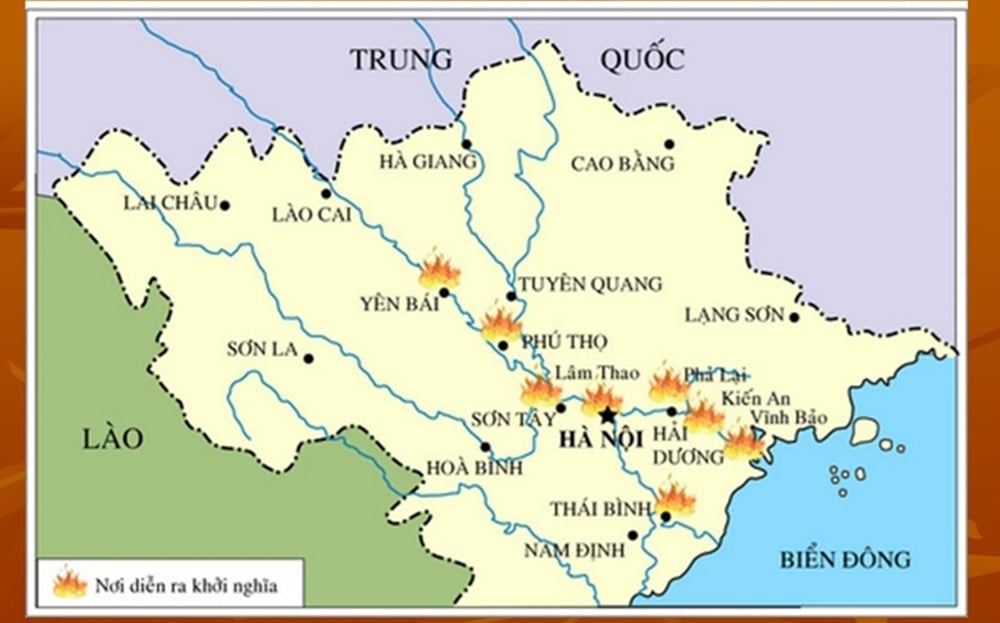
Map of the uprising of the Vietnamese Nationalist Party in Bac Ky.
In addition, Nam Dong Thu Xa also gathered many other enthusiastic young people such as "Pho Duc Chinh, Le Van Phuc, Le Thanh Vi, Nguyen Thai Trac, Vu Huy Chau, Nguyen Huu Dat, Vu Hien, Phan Ngoc Truc, Nguyen Van Lo, Tran Vi, Luu Van Phung"[11]. Nam Dong Thu Xa's books had clear (political and commercial) tendencies, so they were banned and thus brought about the collapse of Nam Dong Thu Xa's foundation[12].
At the conference to establish the Vietnam Nationalist Party in The Giao village, due to a disturbance, it was dissolved halfway and returned to meet again at Nam Dong Thu Xa. The purpose and organization of the Vietnam Nationalist Party were recorded in the charter and were modeled after the institutions of the Chinese Nationalist Party. Documents from the Indochina Secret Service wrote: "Nguyen Thai Hoc and his followers copied verbatim the words of Sun Yat-sen in the Laws of the Republic of China... hoping for the effective power of China to help them expel the French from Indochina by force"[13].
When it was first established, the Vietnam Nationalist Party had not yet set out a clear political line. The Charter drafted on the day of its founding, following the program, only stated in general terms: "First, to be a national revolutionary, then to be a world revolutionary" [14]. In the 1928 Charter, the party stated its ideology as: Social democracy. By 1929, the Vietnam Nationalist Party no longer advocated social democracy, but instead adopted the slogans of the French bourgeois revolution: Liberty - Equality - Fraternity, with the goal of carrying out a bourgeois democratic revolution.
The party's program was divided into four periods. The final period was non-cooperation with the French government and the Nguyen Dynasty; promoting strikes, expelling the French, overthrowing the king, and establishing civil rights.
In terms of organization, the Vietnam Nationalist Party was organized at four levels: the General Department, the Regional Department, the Provincial Department, and the Party Cell; but it never became a system in the whole country. The General Department was actually held by the Northern Regional Department. The grassroots organization of the Nationalist Party among the masses was very small. The area of operation of the Nationalist Party was limited to a few localities in the North, while in the Central and Southern regions it was insignificant. "In the North and the North Central regions, the party quickly received widespread support among young civil servants, teachers, students, soldiers, and women. In early 1929, the party organized 120 Party cells operating in the North, gathering 1,500 party members, 120 of whom were soldiers"[15]. In addition, the Vietnam Nationalist Party also called for the support of philanthropists, capitalists, and benefactors. "They called for the benefactor Dang Dinh Dien to be accepted into the party. Although he was old, because of his influence in the Nam Dinh region and especially his huge fortune. From October 1928, thanks to his guarantee, the party was able to set up a Vietnam Hotel in Hanoi..."[16]. The Nationalist Party advocated carrying out the revolution by violence, focusing on using the enlightened Vietnamese soldiers in the French army as the main force.
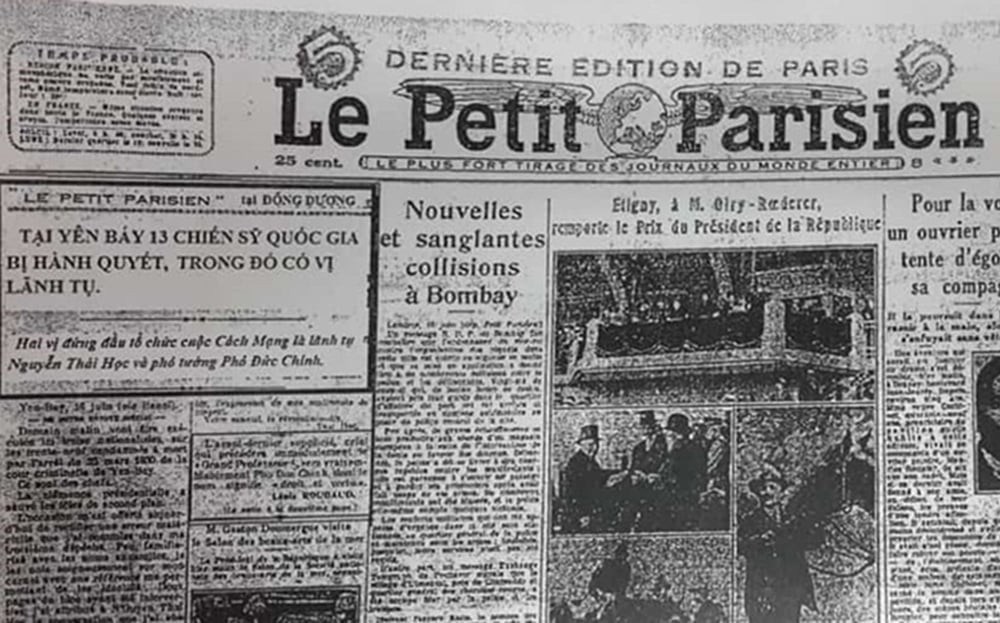
French newspaper published news about the Yen Bai Uprising. (Documents provided by the family of descendants of Mr. Pho Duc Chinh)
2. Nguyen Thai Hoc, Pho Duc Chinh and their colleagues in the uprising that broke out in Yen Bai and the provinces of Bac Ky
What causes led to the uprisings of the Vietnamese Nationalist Party breaking out early before the party's action program had to move to the third period, the period of public uprising, expelling the French invaders, overthrowing the king, and establishing civil rights? It can be seen that some causes leading to the Yen Bai Uprising (in addition to the direct cause leading to the uprising) were: Political dissatisfaction (as in the letter of Nguyen Thai Hoc written to the Governor General of Indochina and the French National Assembly), and the impoverishment of the people, as well as the consequences of the world economic crisis. The conscription of people to work as coolies, recruiting coolies for plantations in the South (especially rubber plantations), sometimes they went and sometimes they didn't, "sometimes they went young men, sometimes they came back weak". "Then there were two consecutive crop failures at the exact time when Indochina was in a major recession: Rice prices fell, rural debt became increasingly serious... On the other hand, the Indochinese currency lost its value since 1925, due to the continuous depreciation of this metal... as a result, domestic rice prices decreased"[17], and the Indochina budget became increasingly bloated.
In late 1928 and early 1929, the Vietnamese Nationalist Party grew strongly in terms of numbers and party bases. However, because the organization was not tight and secret, many spies and informants were able to infiltrate. The French secret service wanted to stop the development of the Vietnamese Nationalist Party, but there was no evidence to incriminate them. Internal conflicts were one of the reasons why the Vietnamese Nationalist Party at the leadership level was not united: "The conflict between the two legislative blocs led by Nguyen Khac Nhu and Nguyen Thai Hoc and the administrative bloc of Nguyen The Nghiep brought the Vietnamese Nationalist Party to the threat of mutual killing"[18].
In February 1929, the Vietnamese Nationalist Party organized the assassination of the chief laborer Bazin (Ba-danh) in Hanoi. "Bazin controlled in Hanoi a recruitment agency of laborers from the North to send to plantations in Southern Indochina or New Caledonia. On the afternoon of the Annamese New Year (February 9, 1929), he was assassinated on the street by several shots from a six-gun (6.35mm pistol) fired by a native... the gunshots mixed with the sound of firecrackers that the Annamese had a custom of setting off on this occasion"[19]. Bazin was assassinated when he had just arrived at the house of his mistress, Miss Germaine Carcelle, a mixed-race woman who sold goods for the Gô Đa trading company at 110, Huế Street (Cho Hom Street). The assassins were carried out by two young men dressed in gray, with bare heads, waiting for Bazin in front of the door. One of them approached and handed him a letter of death sentence... Bazin fell in a pool of blood, and after a while he died[20].
It is believed that this was not a normal murder for money, love, personal hatred or business competition but for political reasons. The perpetrator was a native belonging to an anti-French political organization[21].
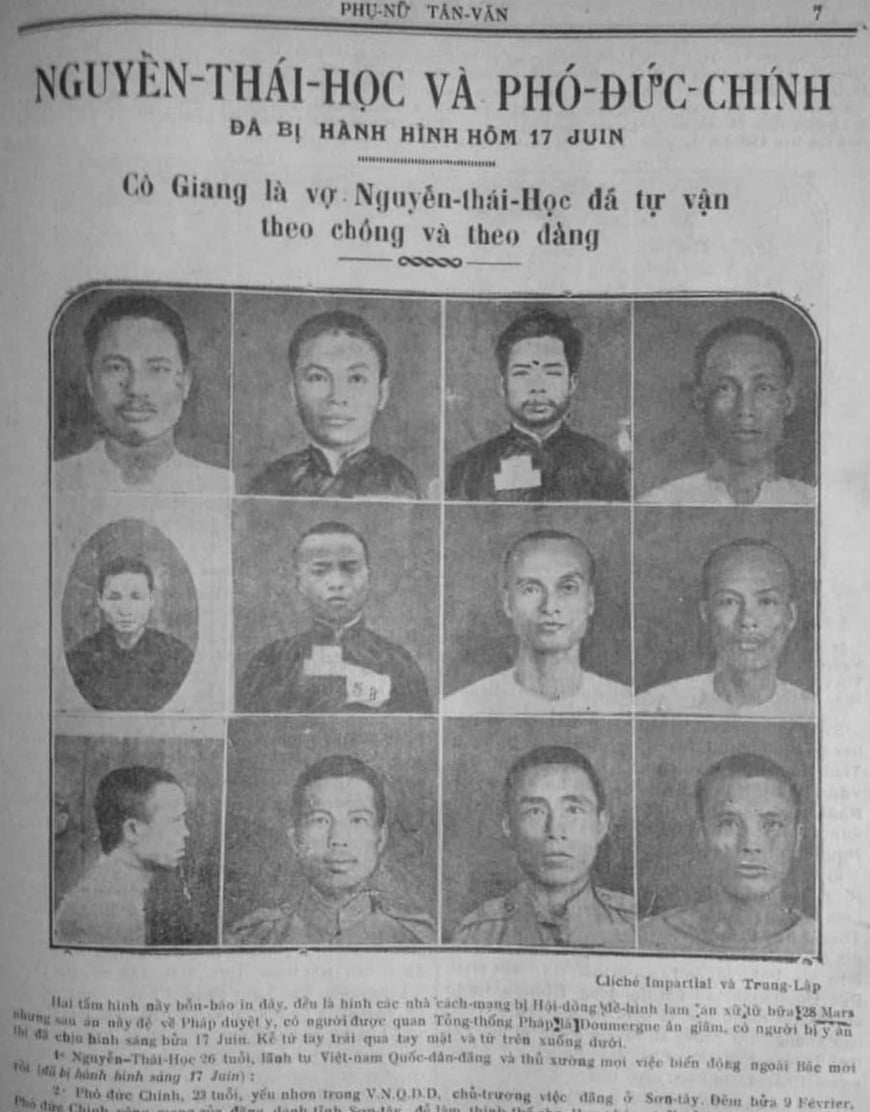
Yen Bai Uprising on Phu Nu Tan Van Newspaper.
Taking advantage of this event, the French colonialists carried out a brutal terror campaign, because they also took this opportunity to suppress other parties that they saw as dangerous, not just the Vietnamese Nationalist Party: "...the French colonialists were also wiser. When they got sick, they made the disease worse, terrorized the people even more. Mass arrests, death sentences, imprisonment, torture..."[22]; "In a short time, most of the party members from the Central to the local levels were arrested, the party system was broken. Coincidentally, the two party leaders, Nguyen Thai Hoc and Nguyen Khac Nhu, were absent from Hanoi at that time, and were on inspection tours in the provinces, so they were informed that they had escaped. Faced with the urgent situation, the two leaders, who were inherently violent, had only one very simple idea: if they just sat still and let the enemy capture them and then go to the guillotine or to prison to end their life of activities, it would be better to take advantage of the time when they were still free outside, to use all their remaining forces to fight a final battle: "If you don't succeed, you will still become a man" [23]. The political situation, tense and suffocating, led to great losses for the revolutionary parties in Vietnam at that time: "In 1929, the French imperialists began to attack the organizations... The attack began with about 300 arrests in Cochinchina to suppress the Thanh Nien group (ie the Vietnam Revolutionary Youth Association). Next, in Tonkin, there were more than 800 arrests. Most of the Annam Nationalist Party was caught in the net”[24].
French scholar Patric Morlat in his book Government and Repression in Vietnam during the Colonial Period 1911-1940, wrote: "Thanks to the search, the security agency discovered many cells, including those in the army. The purpose was to harm the internal security of the State of the Vietnamese Nationalist Party... Governor-General Pasquier sent the case to the Criminal Council of Tonkin..."[25]. Passive in that situation, the key leaders of the Vietnamese Nationalist Party decided to use all their forces to carry out the final riot so that even if they failed, they would still become famous in life. Instead of sitting idly by and waiting to die.
The key leaders of the Vietnam Nationalist Party and their colleagues held a conference to reach a decision at the Lac Dao conference. During this conference, there were two different policies among the remaining members of the Vietnam Nationalist Party. The violent faction, whose representatives were Nguyen Thai Hoc and Nguyen Khac Nhu, advocated an immediate uprising with the above-mentioned theories. On the contrary, the reformist faction, whose representatives were Le Huu Canh and Tran Van Huan, wanted to follow the previously outlined policy and advocated reorganizing the party, not to use violence. As a result, the violent faction overwhelmed the reformist faction. And the policy of violence was considered the party's resolution. The violent faction relied on a number of intellectuals, local men, and rich farmers in the midland and lowland provinces, especially the provinces of Hai Duong, Kien An, Phu Tho, and a number of soldiers in the French ranks such as in Yen Bai, Son Tay, Kien An, and Hai Phong. Contrary to the previous plan of a nationwide general uprising, in the end the preparations for the uprising were limited to a few areas where the Vietnamese Nationalist Party still had some power.
While the preparations for the uprising were facing many obstacles, in September 1929, an unfortunate event occurred at the Vong La Conference with the betrayal of Pham Thanh Duong, causing the uprising force to be damaged once again. The French ruling class deployed police, secret agents and henchmen to further surround and arrest those advocating violence, trying to prevent the riot from breaking out: "The "liquidation" of traitors and accidents caused by the manufacture of explosives alerted the police. And large nets were spread. Many key leaders were caught, and leadership units were destroyed"[26].
The explosions caused by the bomb-making of the Vietnam Nationalist Party also gave the French colonialists clues and many cases were discovered. According to French documents: "On September 3 (1929), three people died in a thatched house in My Dien because they were making bombs and then exploded... On November 20, people discovered one hundred and fifty bombs in a village near Bay Chua. On December 23, another 150 bombs were found in Noi Vien. On the 26th, 290 bombs were found in Thai Ha. On January 10, people dug up many jars containing revolutionary leaflets in Bac Ninh. On the 20th, people arrested a swordsmith and in the following days, many more bombs, hundreds of them, were found in many other villages"[27].
The remaining key figures in the violent faction felt that they had to carry out the violence despite the lack of preparation. In early 1930, the date of the uprising was set. According to the assignment of responsibilities at that time, Mr. Nguyen Thai Hoc would be responsible for commanding the uprisings in several lowland provinces such as Hai Phong, Kien An, Hai Duong, Pha Lai... Meanwhile, Nguyen Khac Nhu "was the commander of the armed uprising in the Northwestern region of the North, including the key points: Yen Bai, Hung Hoa (Phu Tho), Lam Thao" [28]. Pho Duc Chinh was in charge of attacking Thong garrison, a French military headquarters in Son Tay.
According to the documents of the Indochina Secret Service, "The uprising was scheduled for February 10, 1930. The attack plan was as follows: Nguyen The Nghiep had to occupy Lao Kay (Lao Cai). Nguyen Khac Nhu, also known as Xu Nhu, and Pho Duc Chinh had to attack Yen Bai, Hung Hoa, Lam Thao, and Son Tay. Nguyen Thai Hoc had to cause an uprising in Bac Ninh, Dap Cau, and Hai Duong..."[29]. Although the French colonialists were extremely cautious, the uprising still broke out. The uprisings led by the Vietnam Nationalist Party broke out in many provinces in Bac Ky, although the uprisings in each place were different, and in some places the uprisings did not break out. Yen Bai was the province where the uprising was most intense, so people often called it the Yen Bai Uprising.
While the Vietnam Nationalist Party was preparing for the uprising, Nguyen Ai Quoc was operating in Siam (Thailand). Seeing that the uprising broke out at this time was too early because the conditions for the uprising had not been fully and carefully prepared, he therefore judged that the uprising was "difficult to succeed". He wanted to "re-discuss the plan" but could not carry it out. While leader Nguyen Ai Quoc was preparing to cross the Thai border to China, the riot was prepared and broke out[30].
The Yen Bai Uprising broke out at 1:00 a.m. on February 10, 1930[31]. That same night, uprisings broke out in Phu Tho, Son Tay; then in Hai Duong, Thai Binh… In Hanoi, there were also coordinated bombings. The uprising in Yen Bai broke out the largest, in many places the Vietnamese Nationalist Party controlled the situation, however, important positions were not captured: "On the morning of February 10, 1930. The insurgents mainly relied on red-clothed soldiers, captured Thap fort, killed and wounded more than a dozen Frenchmen including the third officer Giuoc-đanh (Juordin), the second officer Hai Robe (Robert), the manager Qui-neo (Cunéo) and the weapons depot, but could not capture Cao fort commanded by the French judiciary officer, could not capture the blue-clothed soldiers' camp and let the Yen Bai Governor escape. The people of Yen Bai town were surprised and did not do anything to support the insurgents. When it was light, the French troops from Cao fort coordinated with the blue-clothed soldiers' unit to counterattack, the insurgents disintegrated. The French colonialists tried their best to hunt down and arrest all the leaders of the Vietnamese Nationalist Party and those who participated in the uprising"[32].
Louis Roubaud's description in the book Viet-nam la Tragédie Indo-chinoise (Vietnam the Indochina tragedy) shows the Yen Bai Uprising in more detail with the events: "Lieutenant Robert was assassinated in his bed, before his wife's eyes. Sergeant Cunéo died without having time to defend himself, but sergeants Chevalier and Damour were not as lucky as Bouhier, dying without having time to react. The others, sergeant Trotoux, sergeant first class Deschamps, sergeants Hurugen and Reynaud with Madame Reynaud were trapped in the room and they resisted with machine guns until morning. Captain Jourdan, in the fortress yard shouting the order to assemble the troops, was immediately killed by a bullet. Captain Gainza was wounded in the side"[33].
The insurgent forces of the Vietnamese Nationalist Party captured the wire house, the gas tusk, distributed leaflets... The next day, the French colonialists counterattacked, the riot failed... Nguyen Thai Hoc, along with key figures and other colleagues were arrested. In his report to the Communist International on February 18, 1930, Nguyen Ai Quoc reported that after the "Nationalist Party incident", the situation in Annam was under severe terror: "I tried to return to Annam twice, but had to return. The secret police and police at the border were too careful, especially since the Annam Nationalist Party incident"[34].
The Yen Bai uprising failed, and at the same time as Yen Bai, uprisings in many other places also failed: "On the same night as Yen Bai, the insurgents attacked Hung Hoa fort and occupied Lam Thao prefecture. According to the plan, once Yen Bai won, these troops would join forces in Hung Hoa, cross the Trung Ha River, attack Thong fort (Son Tay), and meet with Pho Duc Chinh's troops here. The militia attacked Hung Hoa fort, directly commanded by leader Nguyen Khac Nhu. Because of poor weapons and no internal support, this troop could not occupy Hung Hoa fort, and had to retreat to Lam Thao. In Lam Thao, the insurgents led by Pham Nhan occupied Lam Thao prefecture, joining forces with troops from Hung Hoa. Counterattacked by the French army from Phu Tho, leader Nguyen Khac Nhu was wounded and captured, biting his tongue to death", "In just one day, he committed suicide three times, determined to die so as not to live under the same sky with the enemy"[35]. Thus, the uprising army in Yen Bai as well as in Hung Hoa and Lam Thao were successively defeated. "The plan to join forces to attack Son Tay could not be carried out. In Son Tay, the uprising preparations were also exposed, the French colonialists were extremely cautious; in addition to the influence of the failures of the uprising armies in Yen Bai and Phu Tho, the result was that the plan to capture Thong fort could not be carried out. A few days later, Pho Duc Chinh was also captured"[36].
In Thai Binh, the attack on Phu Duc (February 16, 1930) according to colonial documents wrote: "A few days after the rebellion in Yen Bai, on the night of February 15 to 16, 1930, Phu Duc district was also attacked at the same time as Vinh Bao district (Hai Duong). At 9:00 p.m., a group of 40 to 50 soldiers, carrying machetes, clubs and a few bombs, broke into the district office... The group stayed there for about 2 hours, burning documents, detonating many bombs... The Thai Binh embassy only received news that Phu Duc was attacked through the Ninh Giang administrative agency area and the Governor's Palace at 4:00 a.m."[37].
Thus, in addition to the largest uprising led by the Vietnam Nationalist Party in Yen Bai province, there was coordination in other provinces, but it broke out later and more slowly, on a small scale, did not occupy key positions, and only caused some damage to the ruling government. Although the Yen Bai uprising led by Nguyen Thai Hoc, Pho Duc Chinh, and Nguyen Khac Nhu failed quickly, it encouraged the patriotism and hatred of the Vietnamese people towards the French colonialists and their lackeys. The patriotic actions and sacrifices of the Yen Bai soldiers were a continuation of the indomitable patriotic tradition of the Vietnamese people. The historical role of the Vietnam Nationalist Party as a revolutionary political party in the newly emerging national movement ended with the failure of the Yen Bai uprising.
The uprising that took place in Yen Bai province in particular, the general uprising of the Vietnam Nationalist Party in the provinces of Bac Ky in general failed due to various reasons, but basically it can be seen that: The relationship between us and the enemy was still very different; The leadership of the Vietnam Nationalist Party in the uprising was still weak; The armed forces of the uprising were not enough to ensure victory; The uprising did not rely on the support of the people... Regardless of the objective reasons, the main cause of failure was still subjective conditions. There was no solid foundation for the successful uprising, it was not guaranteed. It broke out when the Vietnam Nationalist Party was falling apart and was in danger of being destroyed by the French colonialists. There was no theory in the uprising work. The uprising was not based on a scientific and practical basis at that time, so it took risks with violence, leading to an "immature" uprising, not yet mature, so many lives of the uprising army had to be sacrificed, the result was still failure.
Although the uprising was not successful, we must still acknowledge the short historical mission of revolutionary nature[38] of the Vietnam Nationalist Party in the period of 1927-1930. With the leadership of important figures, party leaders such as Nguyen Thai Hoc, Pho Duc Chinh, Nguyen Khac Nhu, and other colleagues... with a spirit of patriotism, hatred of the enemy, full of sacrifice and hardship, it is worthy of our admiration.
From the time the Vietnam Nationalist Party was founded in late 1927 to the Yen Bai Uprising, the anti-colonial national character was clearly expressed. But at the same time, it also marked the reckless and adventurous nature of the petty bourgeoisie and peasants when they were not under the leadership of the working class. The failure of the Yen Bai Uprising not only led to the complete collapse of the Vietnam Nationalist Party, but also deprived a part of the petty bourgeoisie of the right to lead the revolution. "The Vietnamese revolution here entered a new stage, the stage of exclusive leadership of the working class"[39].
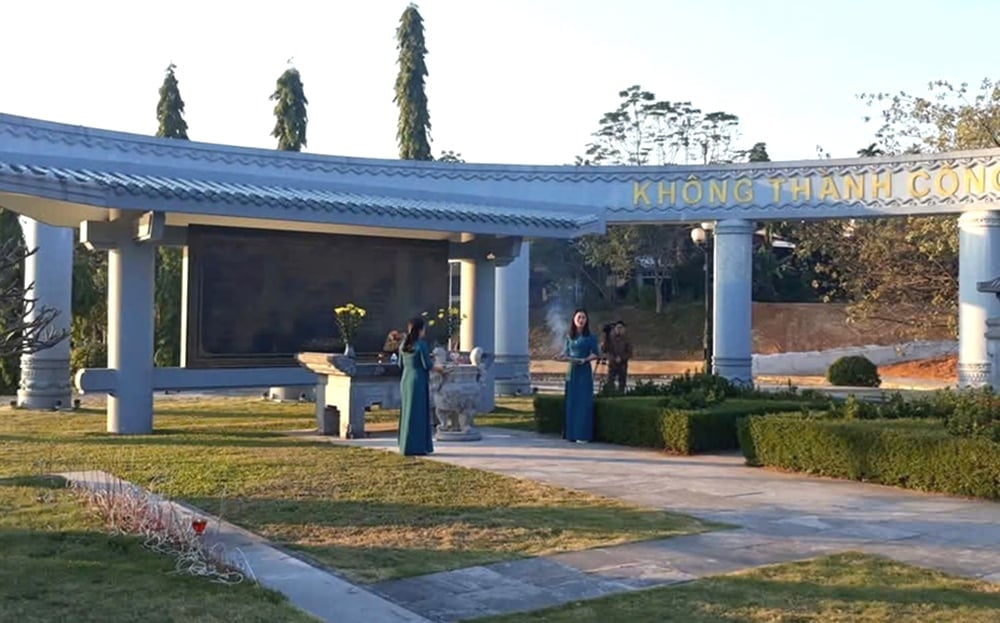
Yen Bai Uprising Memorial Area.
Although the Yen Bai uprising failed, it showed us the spirit because the country's forgotten water of Yen Bai soldiers and left a lesson of experience for the Vietnamese revolution in the following period: "The Yen Bai uprising is a evidence of a nation who does not work as a slave, also a historical lesson of a people oppressed to decide to knock the enemy" [40].
Evaluating the meaning and historical role of Yen Bai uprising of the Communist Party of Vietnam wrote: "... The violence in Yen Bai, although organized by the Nationalist Party of Vietnam, this party restricted the campaign in a level of conspiracy to take action of a group of people, but the violence also had the people attending the people, the same mourning to fight the people of An Nam, the meaning of Yen Bai, the meaning of the people of the people, the meaning of the people of the people. Turning the labor mass, although An Nam red soldier (helped by Tonkin farmers) went directly to the armed struggle against the French Empire.
95 years after the Yen Bai uprising (1930-2025), history has shown that the democratic national revolution in the colonies must be led by the working class, alliance with the peasantry and other revolutionary classes in the nation to vow to ensure victory. The uprising broke out by the will of a few people, but must be due to the subjective and objective conditions. The revolutionary leadership could only succeed when the leadership of the working class of the unity of all the nation stood up to make the revolution of national liberation to defeat the empire and feudalism.
1. Including: Hoang Pham Tran (propaganda), Le Xuan Hy (bachelor's, Deputy Head of Propaganda), Nguyen Ngoc Son (diplomacy), Ho Van Mi (diplomacy), Nguyen Huu Dat (supervision), Hoang Trac, Dang Dinh Dien (finance), Doan Mach Che, Hoang Van Tung (Assassination Committee), Le Van Phuc (Organization), Pham Tiem (?), Tuong Dan Bao (?).
2. History Institute, Ta Thi Thuy (editor), Vietnamese history, episode VIII (1919-1930), Social Sciences Publishing House, 2007, p.514.
3. Ho Chi Minh Biên Biography, Episode 2: 1930-1945, National Political Publishing House Truth, 2016, Tr.248-249.
4. Tran Dan Tien, stories about the life of President Ho Chi Minh, Nghe An Publishing House, 2004, p.76.
5. Tran Dan Tien, stories about the life of President Ho Chi Minh, ibid, p.76.
6. Vietnam Nationalist Party (1927-1932) in the set of Contribution documents l'Histoire des mouvenments politiques de l'Indochine française, documents of Indochina Secret Service, translator: Long Dien, Geography, No. 6, 1967, Saigon, p.96.
7. Tran Huy Lieu, the history of eighty years of anti -French, volume I, Publishing Historical Research Board, 1956, p.280.
8. Articles (speeches) of Prof. Tran Huy Lieu, Head of Literature Research Committee of the Party Central Committee, read at the rally organized by the Ministry of Culture on February 10, 1957, in Hanoi, the anniversary of Yen Bai uprising, typing manuscript, record No. 68, Tran Huy Lieu, MA 68, archived at the History Library.
9. The document of Louis Marty spy is Pham Que Lam. See Louis Marty: Contribution à L'Sistoire des Mouvenments Politiques de l'Indochine Française, episode II "Le Vietnam Nationalist Party", LDDD, p.5.
10. Ho Chi Minh City, episode 3 (1930-1945), a second published, National Political Publishing House, 1995, p.13.
11. Nguyen Thanh, Pham Tuan Tai Life and works, National Political Publishing House, 2002, p.31.
12. Vietnam Nationalist Party (1927-1932) In the collection of Indochina Secret Service, Contribution à L'Histoire des Mouvenments Politiques de l'Indochine Française, History, No. 6, SDD, pp.97-98.
13. Vietnam Nationalist Party (1927-1932) in the episode of Contribution à L'Histoire des Mouvenments Politiques de l'Indochine Française, Indochina Secret Service, History, No. 6, 1967, Saigon, SDD, p.99.
14. Tran Huy Lieu, Van Tao, Xinh Tan, References to the history of the revolutionary revolution in Vietnam, Volume V, Publishing Literature Research Board, 1956, p.18.
15. Le Thanh Khoi, Histoire Du Vietnam, Des Origines 1858 (Vietnamese history, from origin to 1958, SUD - Est Asie, Paris, 1982). Le Viet Nam, Histoire et CivilVisation (Vietnam, History and Civilization, Minuit Paris in 1955), Translation, World Publishing House, 2014, p.536.
According to the document of Indochina Secret Service: Louis Marty, Contribution à L'Histoire des Mouvenments Politiques de l'Indochine Française, History level, No. 6, SDD, p.104.
16. Louis Marty, Contribution à L'Histoire des Mouvenments Politiques de l'Indochine Française, TLĐD, p.104.
17. Le Thanh Khoi, Histoire Du Vietnam, Des Origines 1858, ibid, p.537.
18. Tran Huy Lieu, the history of eighty years of anti -French, book I, ibid, p.289.
19. Louis Marty, Contribution à L'Histoire des Mouvenments Politiques de l'Indochine Française, ibid, p.105.
Concessions, Nguyen Thai Hoc, printed for the fourth time, p.57.
20. Cam Dinh, the Vietnamese National Court in 1929-1930, Nguyen Van Buu printer, Hue, 1950, p.19.
21. Truong Ngoc Phu, from the Bazin assassination in 1929 to the 1930s of the Nationalist Party of Vietnam, gathered in history, No. 26, Saigon, 1974, pp.98-99.
22. Tran Dan Tien, stories about the life of President Ho Chi Minh, ibid, p.76.
23. Tran Huy Lieu, withdrawing lessons about the Yen Bai uprising, typing manuscript, record No. 68, Tran Huy Lieu, THL 68, stored at the History Institute library.
24. The Communist Party of Vietnam, the entire Party document, volume 2 (1930), National Political Publishing House, 1998, pp.34.
25. Patric Morlat, the government and the persecution in Vietnam during the colonial period 1911-1940 (Pouvoir et serial au Vietnam Durant La Période Colo-Niale 1911-1940, Tome I, 1985), Ta Thi Thuy Dich, printed in the book: Martyrs Nguyen Thai Hoc President of Vietnam Nationalist Party in 1930, Program of Science Conference, Vinh Phuc Provincial People's Committee, coordinated with the Hospital of Hoc Hoc, coordinated with the Institute 2004, p.173.
26. Le Thanh Khoi, Histoire Du Vietnam, Des Origines à 1858 ..., translation, ibid, p.537.
27. Louis Robaud, Viet-Nam La Tragédie Indo-Chinoise (Vietnam Tragedy Indochina), Paris Librairie Valois 7, Place Du Panthéon, 7-1931. P.24; See more in the translation of Chuong Thau, Phan Trong Bau, People's Police Publishing House, 2003, p.30.
28. Vietnam Historical Science Association, Patriotic House Nguyen Khac Nhu, Hanoi, 1993, p.3.
29. Vietnam Nationalist Party (1927-1932) In the collection of Dong Duong Secret Service, Contribution à L'Histoire des Mouvenments Politiques de l'Indochine Française, ibid, pp.111-112.
30. Ho Chi Minh City, episode 3 (1930-1945), a second published, National Political Publishing House, 1995, p.621.
31. Executive Committee of Yen Bai Provincial Party Committee, History of Yen Bai Provincial Party Committee, volume I (1930-1975), Propaganda Department of the Provincial Party Committee published, 1996, p.17.
32. History of Yen Bai Provincial Party Committee, ibid, p.18.
33. Louis Robaud, Viet-Nam La Tragédie Indo-Chinoise, ibid, p.21-22, Translation, p.29.
34. Ho Chi Minh City, episode 3 (1930-1945), ibid, p.12.
35. Patriotic House Nguyen Khac Nhu, ibid, p.3.
36. Tran Huy Lieu, withdrawing lessons about the Yen Bai uprising, ibid, pp.459.
37. Notice Sur La Province de Thai Binh (notes about Thai Binh province), (translation of Nguyen Dinh Khang).
38. In the following stage, the Nationalist Party of Vietnam lost its historical role, lost the right to leadership and no longer revolutionary, we regardless of the activities of Vietnam Nationalist Party at the foreign comedy.
39. Tran Huy Lieu, the history of eighty years of anti -French, book I, printed in: The work was awarded the Ho Chi Minh Award, Social Sciences Publishing House, 2003, pp.332.
40. Manuscript (typing) Profile No. 68, Tran Huy Lieu font, THL.68. Archives of History Institute.
41. Party documents, episode 2, ibid, p.286-287.
(According to People's Army)
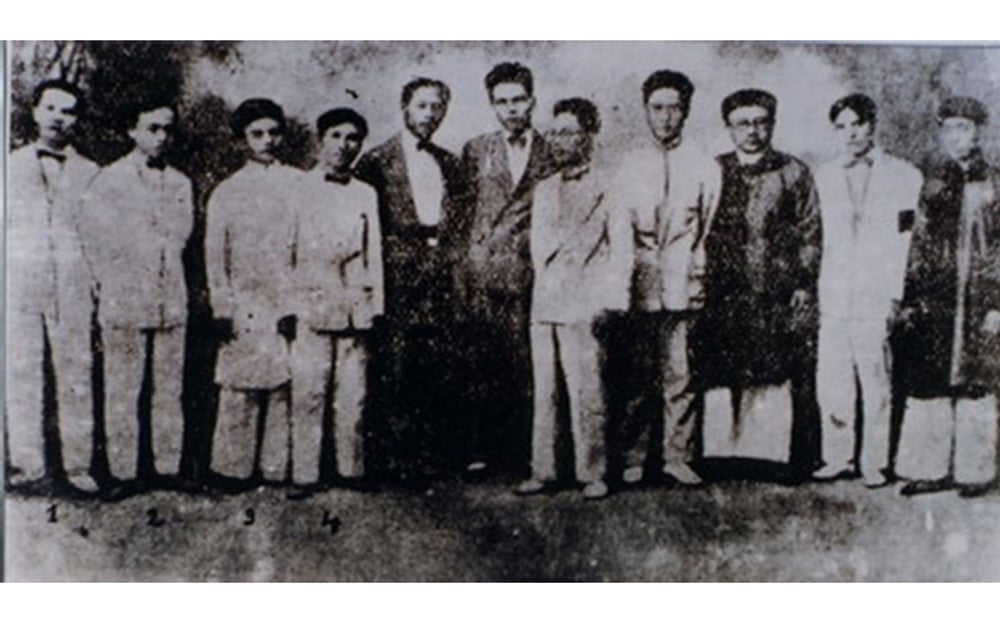






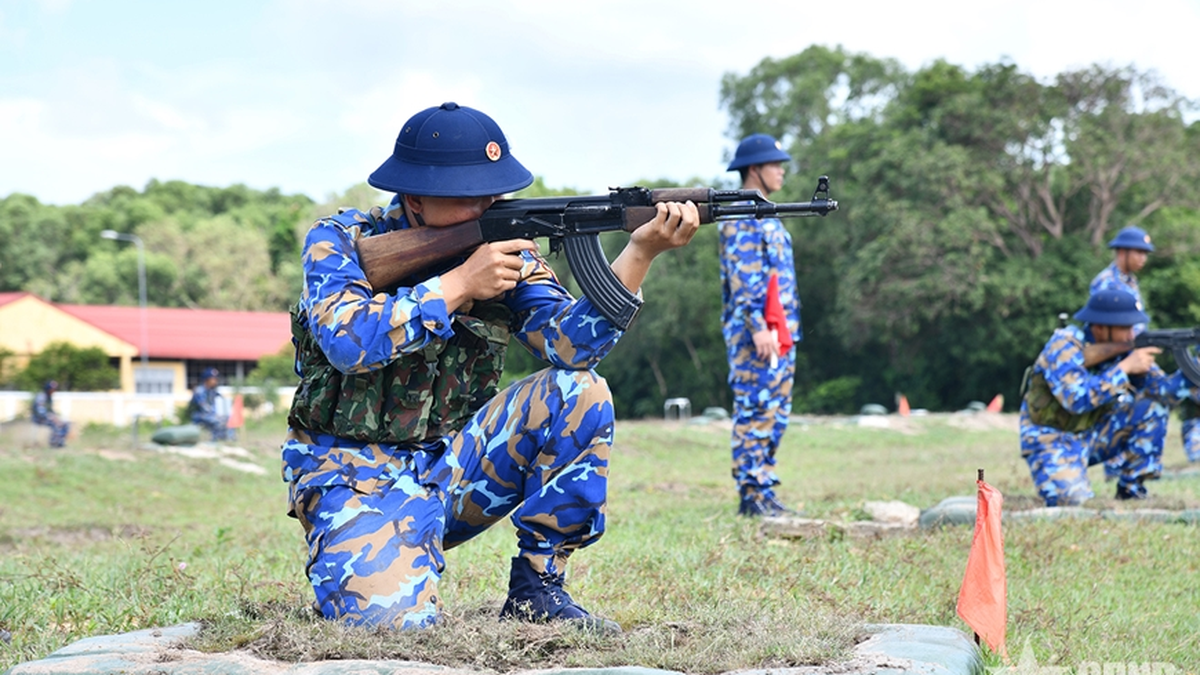

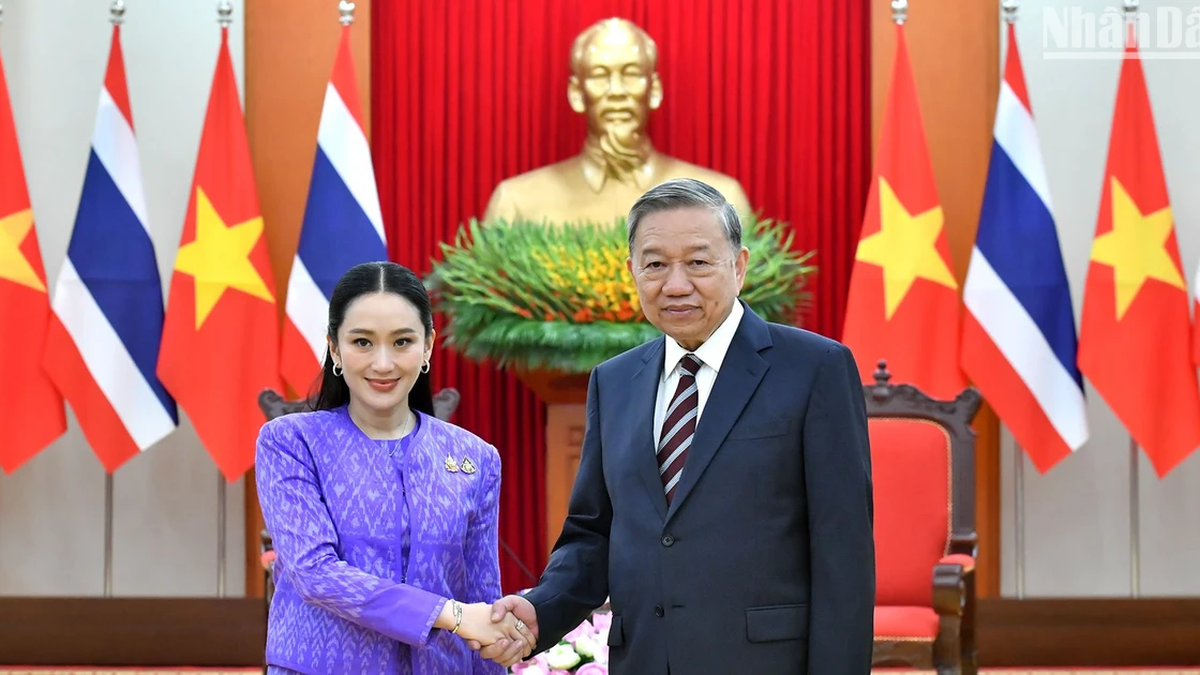
![[Photo] Prime Minister Pham Minh Chinh and Prime Minister of the Kingdom of Thailand Paetongtarn Shinawatra attend the Vietnam-Thailand Business Forum 2025](https://vphoto.vietnam.vn/thumb/1200x675/vietnam/resource/IMAGE/2025/5/16/1cdfce54d25c48a68ae6fb9204f2171a)

![[Photo] President Luong Cuong receives Prime Minister of the Kingdom of Thailand Paetongtarn Shinawatra](https://vphoto.vietnam.vn/thumb/1200x675/vietnam/resource/IMAGE/2025/5/16/52c73b27198a4e12bd6a903d1c218846)



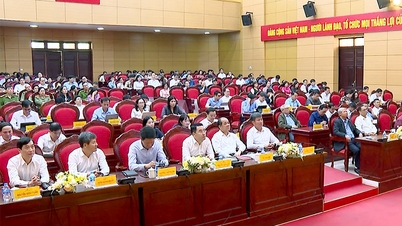
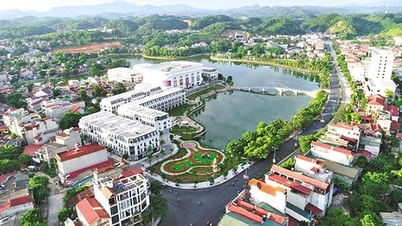

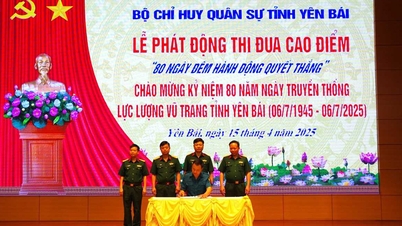

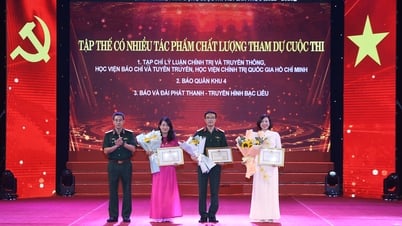
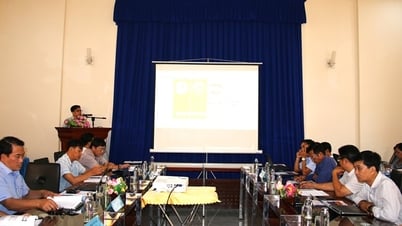
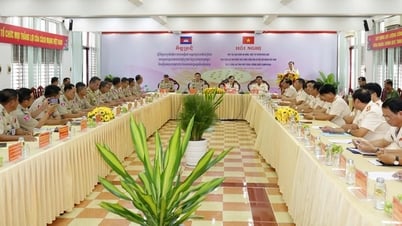
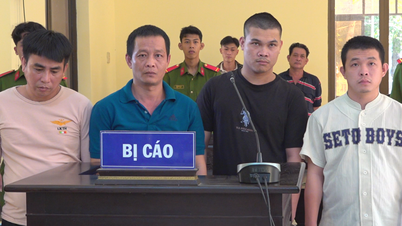





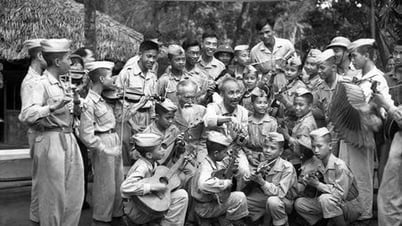


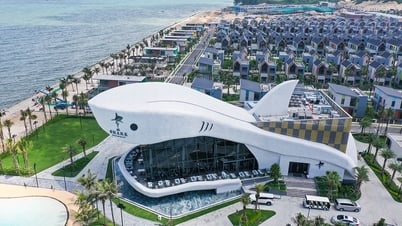

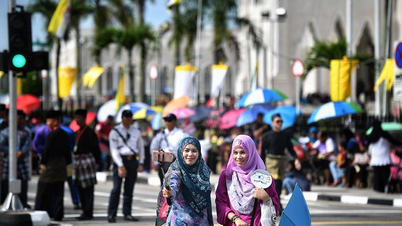
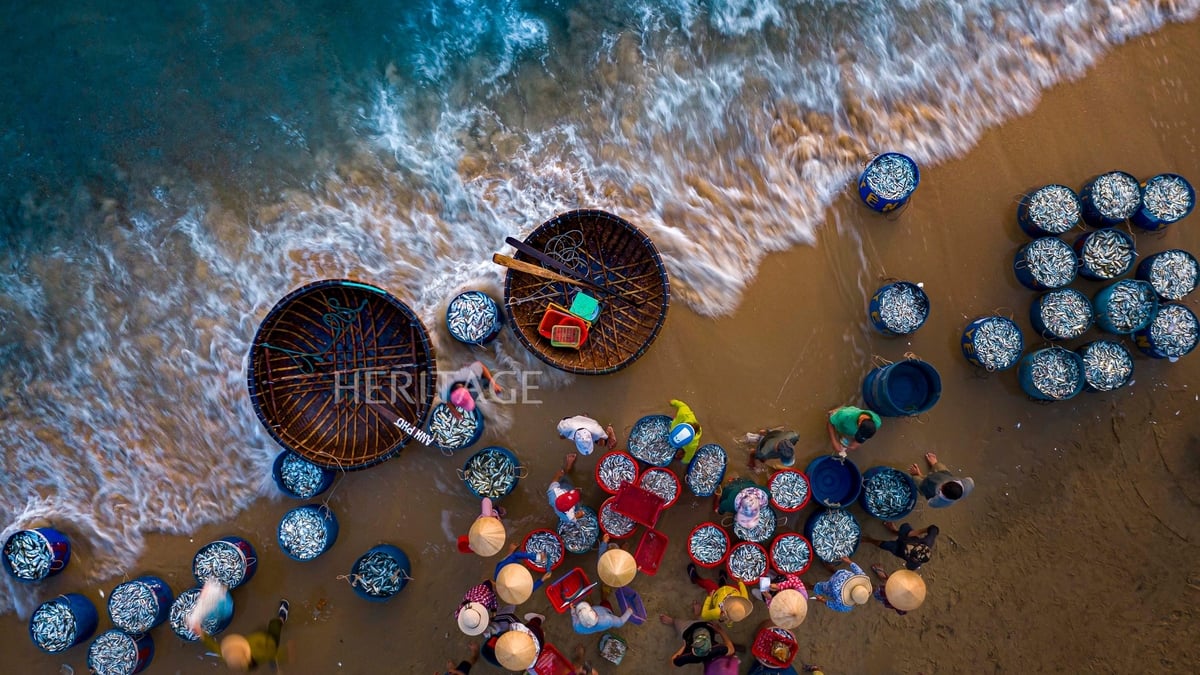
![[Photo] The Prime Ministers of Vietnam and Thailand witnessed the signing ceremony of cooperation and exchange of documents.](https://vphoto.vietnam.vn/thumb/1200x675/vietnam/resource/IMAGE/2025/5/16/935407e225f640f9ac97b85d3359c1a5)




































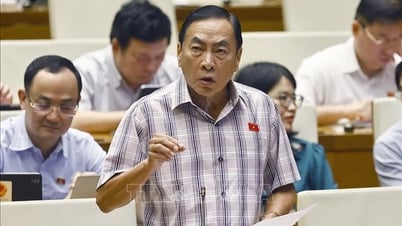


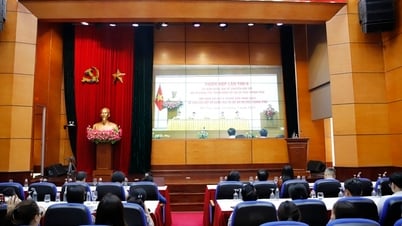
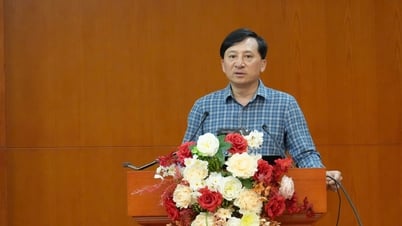

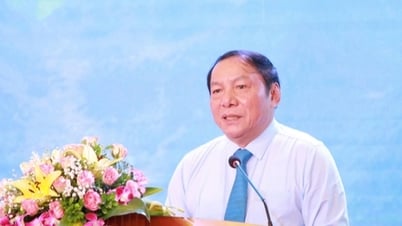

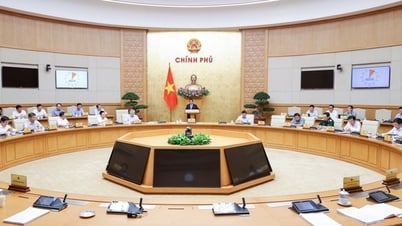
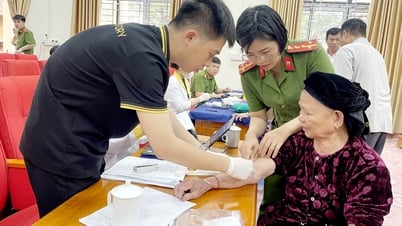

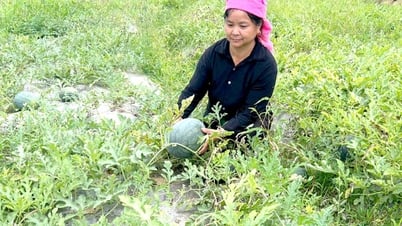
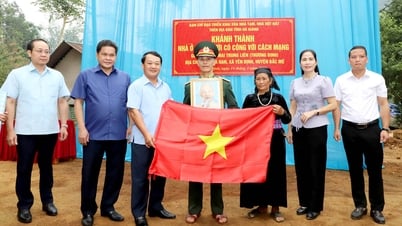
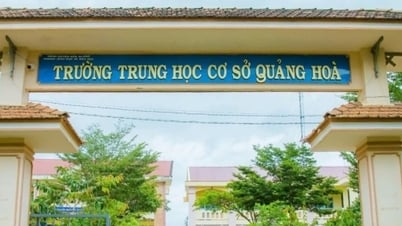

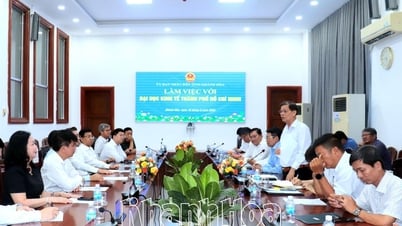

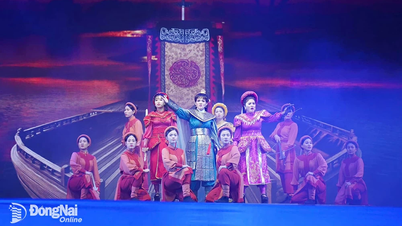












Comment (0)